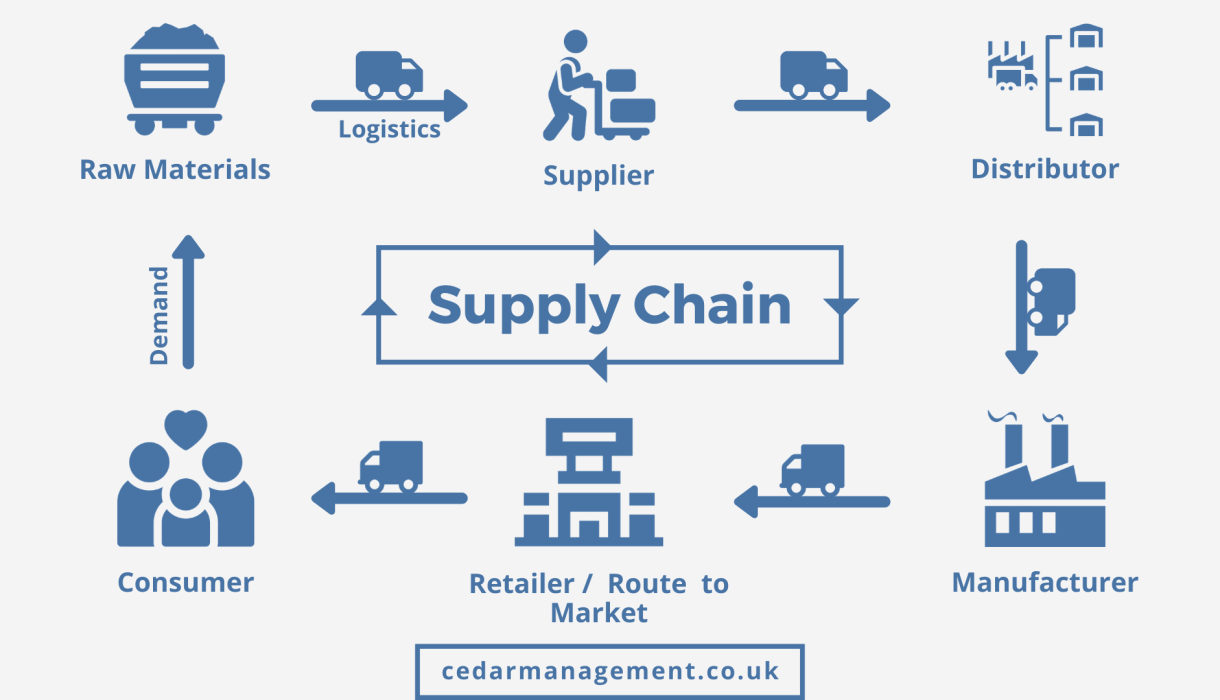
The Tariff Storm: The Impact of U.S.-China Trade Policies on Global Supply Chains.
Posted in :
The U.S.-China tariff standoff disrupts global supply chains significantly, causing shortages and prompting businesses to rethink strategies, with long-lasting impacts on trade dynamics ahead.
The extensive effects of the ongoing trade tensions between the U.S. and China on global supply chains, how businesses are adapting, and potential long-term outcomes in a shifting trade landscape.
Imagine walking into your favorite store to find empty shelves and rising prices just before the holiday season. This isn’t just a coincidence; it’s a ripple effect of ongoing tariff disputes between the United States and China. As tariffs create havoc in supply chains, businesses are left scrambling. This blog delves deep into the implications of this trade standoff and explores how industries are responding to the chaos.
Understanding the Tariff Landscape
Overview of Current U.S.-China Tariff Policies
The trade relationship between the U.S. and China has been tumultuous, especially in recent years. Currently, U.S. tariffs on Chinese imports stand at a staggering 145%. This high rate has created a ripple effect across various sectors. Businesses are feeling the pressure, and consumers are starting to notice the impact on prices and availability of goods.
These tariffs were significantly increased during the Trump administration, and they continue to shape the future of trade. The ongoing standoff has led to a re-evaluation of strategies among businesses. But what does this mean for the average consumer? Are we seeing empty shelves and rising prices as a direct result of these policies?
Effects of Tariffs on Chinese Manufacturing and Global Supply Chains
Tariffs have not only affected U.S. consumers but have also disrupted Chinese manufacturing. According to Sébastien Breteau, CEO of QIMA, the tariffs have led to unpredictable production flows. Some manufacturers are ramping up capacity, while others are facing bottlenecks due to fluctuating demand. This inconsistency is causing chaos in the supply chain.
- Manufacturers are experiencing fluctuating demand.
- Some companies are deprioritizing the U.S. market.
- Global shipping firms are rerouting cargo to avoid reliance on China.
As a result, many large Chinese multinationals are reconsidering their strategies. They are looking for more stable markets, which could lead to long-term shifts in global trade dynamics. The uncertainty surrounding tariffs is influencing high-level sourcing decisions. Companies are bracing for disruptions, and this is evident in the logistics sector.
Insights from Trade Experts on Ongoing Negotiations
Trade experts are closely monitoring the situation. The outcomes of ongoing negotiations remain unclear. Many businesses are paralyzed, waiting for clarity on potential tariff reductions. Ryan Petersen, CEO of Flexport, noted that ocean carriers are shifting their focus. They are taking new routes from Southeast Asia to the U.S. and Europe, which reflects a significant change in logistics strategies.
Moreover, the rising cargo insurance premiums have reached what some describe as “punishing and unsustainable levels.” This is a clear indication of the stress that tariffs are placing on global supply chains. The situation is reminiscent of the disruptions experienced during the pandemic, with significant cancellations reported at major ports.
Gene Seroka, Port Director of Los Angeles, indicated that around 12 canceled sailings are expected in May, matching the total cancellations seen last year. This decline in global port throughput is alarming. Analysts attribute this to a resurgence of “naked protectionism.” The implications are vast, affecting everything from production in East Asia to retail operations in the U.S.
Current Challenges and Future Outlook
As companies navigate these turbulent waters, many are utilizing bonded warehouses. This allows them to store imports without incurring tariffs until they can be released to retailers or re-exported. This strategy is crucial as firms remain hopeful for a resolution to the sweeping tariffs.
Retail giants like Walmart, Home Depot, and Target have become increasingly vocal about these pressures. Executives from these companies recently met with President Trump, expressing concern over empty shelves and rising consumer prices. The National Retail Federation is actively opposing tariffs, advocating against the imposition of tariffs on essential consumer goods.
“Tariffs create confusion and uncertainty in global trade,” – Sébastien Breteau
Despite some changes in tone from the U.S. side regarding trade negotiations, Chinese officials have firmly stated that no consultations about tariffs are occurring. They insist that the U.S. should cease “creating confusion.” This complex landscape reveals how tariffs continue to shape and reconfigure global supply chains.
As the situation evolves, businesses and consumers alike are left to wonder: What will the future hold? Will we see a resolution, or are we in for more uncertainty?
The Supply Chain Disruption: Who’s Affected?
The ongoing supply chain disruption is reshaping the landscape for many businesses. Retail giants like Walmart and Home Depot are feeling the heat. They are not alone; the ripple effects are widespread, impacting shipping logistics and port operations. But how are these companies adapting to the challenges they face?
Impact on Retail Giants
Walmart and Home Depot have been vocal about the challenges they are encountering. Empty shelves are becoming a common sight. Retail executives have expressed their concerns over stock levels. They fear that consumers may not find what they need, especially as the holiday season approaches. This situation raises a critical question: How can these giants maintain their inventory amidst rising costs and delays?
- Walmart has been adjusting its supply chain strategies.
- Home Depot is exploring new sourcing options.
- Both companies are increasing their focus on local suppliers.
These adaptations are crucial. They aim to ensure that customers can find products when they need them. However, the challenges are significant. The projected -1% decline in global port throughput this year is alarming. It signals that the disruptions are not just temporary; they may have long-lasting effects.
Effects on Shipping Logistics and Port Operations
Shipping logistics are also feeling the strain. Port operations are revealing signs reminiscent of the disruptions experienced during the pandemic. In May, port cancellations reached levels similar to the previous year. This is concerning for many businesses relying on timely deliveries.
Gene Seroka, the Port Director of Los Angeles, indicated that around 12 canceled sailings are expected in May. This matches the total cancellations seen last May. Such disruptions can lead to delays in product availability. As a result, businesses are forced to rethink their logistics strategies.
Shipping firms are adapting by rerouting cargo vessels. They are moving away from reliance on China as a supply source. Ryan Petersen, CEO of Flexport, mentioned that ocean carriers have shifted their focus to new routes from Southeast Asia to the United States and Europe. This shift reflects the changing dynamics of global trade.
Adapting to Inventory Issues
In response to these disruptions, many companies are utilizing bonded warehouses. This strategy allows them to store imports without incurring tariffs until goods can be released to retailers or re-exported. It’s a smart move, especially as firms remain hopeful for a resolution to the sweeping 145% U.S. tariffs on Chinese imports.
Retailers are not just sitting back. They are actively seeking solutions. Some are increasing their inventory levels to buffer against future disruptions. Others are diversifying their supply chains to reduce dependency on any single source. This adaptability is vital in a landscape where uncertainty reigns.
However, the challenges remain daunting. David Osler noted,
“The industry is facing ‘punishing and unsustainable’ insurance levels.”
This statement highlights the financial pressures that businesses are under. Rising insurance costs can further strain already tight margins.
As the supply chain disruption continues, the impacts are felt across various sectors. Retail giants like Walmart and Home Depot are adapting, but the road ahead is fraught with challenges. Shipping logistics and port operations are struggling to keep pace, and businesses are forced to innovate to survive. The question remains: How long will these disruptions last, and what will the long-term effects be on global trade?
Strategies for Businesses Amidst Tariffs
The ongoing tariff standoff between the U.S. and China has created a whirlwind of challenges for businesses worldwide. As tariffs disrupt traditional supply operations, companies are forced to adapt. They are employing creative strategies to cope with the pressure. This blog explores some of these strategies, including the use of bonded warehouses, rerouted shipping routes, and long-term sustainable sourcing.
Use of Bonded Warehouses to Mitigate Tariff Costs
Bonded warehouses are becoming a lifeline for many businesses. These facilities allow companies to store imported goods without paying tariffs until the products are released for sale. This strategy is particularly vital in the current climate, where uncertainty looms over tariff rates. As Ryan Petersen, CEO of Flexport, noted,
“Many businesses are paralyzed in their decisions awaiting tariff clarity.”
By utilizing bonded warehouses, companies can delay tariff payments, giving them time to reassess their strategies.
For instance, retailers can stock up on goods without incurring immediate costs. This approach not only helps in managing cash flow but also allows businesses to respond more flexibly to market demands. As tariffs fluctuate, having inventory in bonded warehouses can provide a buffer against sudden price increases.
Rerouted Shipping Routes and Changing Logistics
Shipping logistics are undergoing significant changes. Many companies are rerouting their shipping routes to avoid tariffs. This shift is particularly evident as global shipping firms look to regions like Vietnam instead of China. The logistics landscape is evolving rapidly. Companies are adapting to these changes to maintain their supply chains.
As noted by Ryan Petersen, ocean carriers are now focusing on new routes from Southeast Asia to the United States and Europe. This shift is not without its challenges. Shipping costs have surged for specific routes, leading to increased cargo insurance premiums. The logistics industry is feeling the strain, with some shipping routes becoming “punishing and unsustainable.” Businesses must navigate these complexities to ensure their products reach consumers efficiently.
Long-Term Strategies for Sustainable Sourcing
In light of the ongoing tariff situation, businesses are also reconsidering their long-term sourcing strategies. The uncertainty surrounding tariffs has prompted many companies to diversify their supply sources. This approach not only mitigates risks but also fosters resilience in supply chains.
For example, some manufacturers are shifting their focus away from the U.S. market, seeking more stable global approaches. This shift can lead to a more balanced supply chain, reducing reliance on any single region. Companies are exploring partnerships with suppliers in various countries, ensuring they have multiple options for sourcing materials.
As businesses adapt to these changes, they are also looking at sustainable sourcing practices. This means considering the environmental impact of their supply chains and seeking out suppliers who prioritize sustainability. By doing so, companies can not only navigate tariffs but also align with consumer preferences for eco-friendly products.
The landscape of global trade is shifting dramatically due to tariffs. Businesses are forced to rethink their strategies in response to these challenges. The use of bonded warehouses, rerouted shipping routes, and long-term sustainable sourcing are just a few of the tactics companies are employing to navigate this complex environment. As Ryan Petersen aptly stated, many businesses are waiting for clarity on tariffs before making decisions. However, those that proactively adapt to these changes will likely emerge stronger in the long run. The ability to pivot and innovate in the face of uncertainty will define the success of businesses in this new era of trade.
TL;DR: The U.S.-China tariff standoff disrupts global supply chains significantly, causing shortages and prompting businesses to rethink strategies, with long-lasting impacts on trade dynamics ahead.
U.S.-ChinaTariffs, ShippingIndustryChanges, TradePoliciesImpact, LogisticsAdaptations, GlobalSupplyChains, RetailSupplyIssues, ChineseManufacturingEffects, BondedWarehousesStrategy,U.S.-China tariffs, supply chain disruption, global trade policies, tariff impact on shipping, business strategies tariffs, retail supply shortages, bonded warehouses
#Tariffs, #SupplyChainCrisis, #GlobalTrade, #RetailShortages, #ShippingLogistics, #TradePolicies, #USChinaRelations,#RetailSupplyIssues, #BondedWarehousesStrategy, #GlobalSupplyChains, #TradePoliciesImpact, #ShippingIndustryChanges, #LogisticsAdaptations, #U.S.-ChinaTariffs, #ChineseManufacturingEffects

